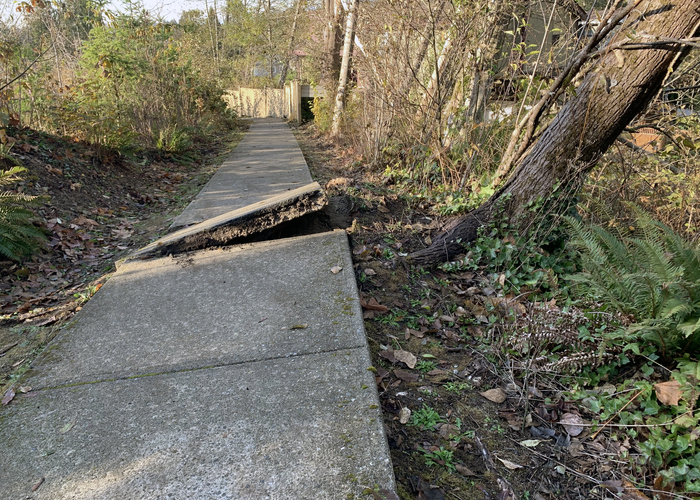8.21.23
Beware of Plants That Can Damage Your Home

Make sure you understand a plant’s growth habits before adding it to your landscape to avoid costly damage later.
Fall is an ideal time to plant trees, shrubs, and vines. However, you want to make sure you have the right plant in the right place in order to avoid costly damage to your home later. Here’s a quick overview of the problems some plants can create.
Water-seekers that invade underground pipes
A number or trees and shrubs are known to have roots that seek water in pipes such as septic systems, drain fields or foundation drains. The most common offenders are willows, maples, poplars, birch and tulip trees. Shrubs in this lineup include holly, and boxwood. If any of these plants are part of your landscaping plans, make sure they are not planted near underground pipes.
Herculean roots that damage concrete
If you’ve ever noticed a buckled sidewalk near a mature tree, you’ve likely noticed the mighty power of root systems. With time and immense power, trees such as silver and Norway maples, mulberries, cottonwood and black walnuts can lift sidewalks and crack patios, driveways and even foundation walls. Such root damage might only be an inconvenience at first, but over time it can affect the structural integrity of your home.
Choose climbing vines carefully
There is beauty in a wall covered by climbing vines. However, climbers like English ivy, trumpet vine and euonymus use aerial rootlets to attach themselves to structures. Over the years, those roots push through siding and damage masonry. Additionally, with rain or snow melt, the plants hold water against a home’s exterior which can result in further damage.
If you’re in love with a climbing vine that creates damage and simply must have it, consider planting it somewhere other than next to your home, such as a trellis or a detached pagoda.
Beware of bamboo
There’s no doubt that bamboo lends a lovely tropical flair to a landscape, but it is also one of the most invasive and hardest to eradicate plants. Clumping bamboo is less of a problem than running bamboo. The running varieties spread by rhizomes that grow into new shoots, which spread into more rhizomes and grow more shoots. Before you know it, you have impenetrable stand of stalks filling your yard and invading your neighbor’s.
It’s no exaggeration to say it can take years to remove invasive bamboo and that its presence can reduce your home’s value. Additionally, because bamboo isn’t a native plant, it doesn’t offer food or shelter for wildlife.
Plan your plants
Before investing in any tree, shrub or vine, research its growth habits—upward, outward and downward where the roots grow. Careful planning today can help avoid costly damage years from now. If you’re unsure what to plant, consult with a local nursery or landscape designer.
To finance bigger landscaping projects, remember that you can tap your home equity with a Consumers Home Equity Line of Credit (HELOC) to get the beautiful yard you want right away.
Consumers helps thousands of members finance land, first and second homes, and home improvement projects each year. We’d love to help you with a mortgage or home equity line of credit; contact us online or call us at 800.991.2221.
*All loans subject to approval. Rates, terms, and conditions are subject to change and may vary based on credit worthiness, qualifications, and collateral conditions.
![]()



